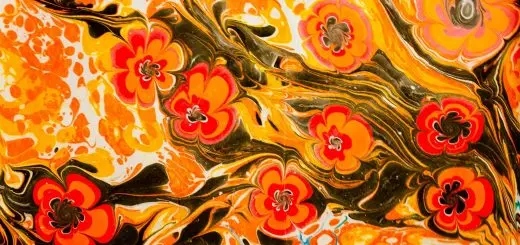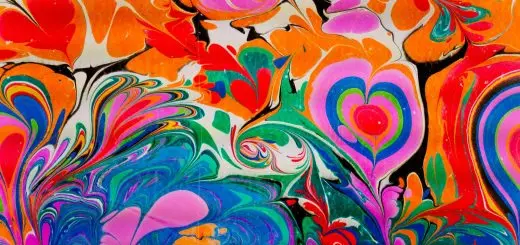Tiki-Ti: The Maori Art of Wood Carving

Looking for more amazing products? Check out our online store and explore our collection here! Happy shopping!
Before diving in, please note: This post is for informational purposes only. If you’d like to know more about how we approach topics, feel free to check out our friendly Disclaimer Page.
Hey there, amazing readers! 
We’re committed to delivering quality posts, and your support (even just sticking around despite the ads) means everything to us. So, bear with us, and thanks for helping us keep the good vibes rolling. Now, on to the fun stuff!
TRANSLATE BUTTON AT THE END OF THE ARTICLE
Introduction to Tiki-Ti: The Maori Art of Wood Carving
Tiki-Ti is a traditional form of Maori art that involves the intricate carving of wood to create beautiful and symbolic sculptures.
The art form has a rich history and holds great cultural significance for the Maori people of New Zealand.
The carvings are often used as decorative pieces, ceremonial objects, or as a way to depict important figures and ancestors.
Tiki-Ti is known for its unique and intricate designs, which are often filled with symbolism and meaning.
This article will explore the origins and history of Tiki-Ti, the traditional techniques and tools used, the significance and symbolism of the carvings, and the materials used in the art form.
Origins and History of Tiki-Ti
The art of Tiki-Ti has its roots in the ancient Maori culture of New Zealand.
The Maori people have a deep connection to their ancestors and their spirituality, and this is often reflected in their art.
Wood carving has been an integral part of Maori culture for centuries, with the earliest examples dating back to the 13th century.
The art form was traditionally passed down from generation to generation, with each carver adding their own unique style and techniques to the craft.
Over time, Tiki-Ti has evolved and adapted to changing cultural and societal influences, but it has remained an important part of Maori identity and artistic expression.
Traditional Techniques and Tools Used in Tiki-Ti
The creation of Tiki-Ti involves a combination of traditional techniques and tools.
Maori wood carvers typically use a range of specialized tools to shape the wood, including adzes, chisels, gouges, and saws.
These tools are often handmade and passed down through generations.
The carving process begins with the selection of the wood, which is usually sourced from native New Zealand trees such as the totara or kauri.
The wood is then carefully shaped and carved using the tools, with great attention to detail and precision.
Traditional techniques such as relief carving, deep carving, and inlay work are used to create the intricate patterns and designs that are characteristic of Tiki-Ti.
Significance and Symbolism of Maori Wood Carvings
Maori wood carvings hold great significance and symbolism within Maori culture.
Each carving tells a story and represents an important aspect of Maori mythology, history, or spirituality.
One of the most common symbols found in Tiki-Ti is the Tiki figure, which represents the first human being in Maori mythology and is seen as a guardian or protector.
Other common symbols include koru, which represents new life and growth, and manaia, a spiritual guardian.
The carvings often depict ancestors or important figures in Maori history, serving as a way to honor and remember them.
The intricate patterns and designs also represent the interconnectedness of all things in Maori cosmology.
Materials Used in Tiki-Ti: From Ancient to Modern Times
Traditionally, Maori wood carvers used native New Zealand trees such as totara, kauri, and pohutukawa to create their carvings.
These trees were highly valued for their durability and strength, and their wood was believed to have spiritual properties.
However, in modern times, the availability of these native trees has decreased, leading to the use of alternative materials such as pine or imported woods like mahogany.
While the choice of material may have changed, the craftsmanship and skill in creating Tiki-Ti remains the same.
The Process of Creating a Tiki-Ti: From Design to Finish
Creating a Tiki-Ti sculpture is a meticulous and time-consuming process.
It begins with the design or concept, which is often influenced by Maori mythology, history, or personal stories.
Once the design is finalized, the wood is carefully selected, taking into consideration its grain and texture.
The carver then begins the process of shaping the wood using a variety of tools, working slowly and methodically to bring the design to life.
The carving process can take weeks or even months, depending on the complexity of the design.
Once the carving is complete, the sculpture is sanded and polished to achieve a smooth finish.
Some carvers may choose to add traditional pigments or natural oils to enhance the color and protect the wood.
Famous Maori Wood Carvers and their Contributions
Throughout history, there have been many skilled Maori wood carvers who have made significant contributions to the art of Tiki-Ti.
One such renowned carver is Hone Tuwhare, whose works are highly sought after for their intricate designs and attention to detail.
Another influential figure is Cliff Whiting, who played a crucial role in the revival and preservation of Maori arts and culture.
These carvers, along with many others, have helped to keep the tradition of Tiki-Ti alive and have inspired a new generation of artists to continue the craft.
Tiki-Ti in Contemporary Maori Culture and Art
While Tiki-Ti has deep roots in ancient Maori culture, it continues to hold a prominent place in contemporary Maori art.
Many Maori artists today use Tiki-Ti as a medium for self-expression and cultural preservation.
The art form has also gained recognition and appreciation on a global scale, with exhibitions and galleries showcasing the talent and skill of Maori wood carvers.
Tiki-Ti is not only a form of artistic expression but also a way for Maori people to connect with their cultural heritage and share their stories with the world.
Cultural Preservation and Revival of Tiki-Ti
The preservation and revival of Tiki-Ti have been of utmost importance to the Maori people.
Efforts have been made to ensure that the traditional techniques and knowledge are passed down to future generations.
Many communities and organizations have established carving schools and workshops to teach young Maori artists the art of Tiki-Ti.
These initiatives aim to preserve the cultural significance of Tiki-Ti and the rich heritage it represents.
Additionally, there has been a resurgence of interest in Maori culture and art, both within New Zealand and internationally, leading to increased recognition and support for Tiki-Ti.
Tiki-Ti: A Unique Form of Maori Expression
Tiki-Ti stands out as a unique form of Maori expression, combining artistic skill with cultural significance.
The intricate carvings and symbolism in Tiki-Ti sculptures tell stories and convey meaning in a way that is deeply rooted in Maori culture.
The art form showcases the craftsmanship and creativity of Maori wood carvers, capturing the essence of Maori spirituality and tradition.
Tiki-Ti is not only visually stunning but also a powerful representation of Maori identity and pride.
Tiki-Ti’s Influence on Modern Woodworking and Sculpture
The beauty and craftsmanship of Tiki-Ti have had a significant influence on modern woodworking and sculpture.
The intricate patterns, attention to detail, and skillful techniques used in Tiki-Ti have inspired artists from around the world to incorporate similar elements into their own work.
The use of wood as a medium for artistic expression has also gained popularity, with many artists exploring the possibilities of creating intricate sculptures and carvings.
Tiki-Ti has served as a source of inspiration and a testament to the enduring legacy of Maori art.
Appreciating the Beauty and Craftsmanship of Tiki-Ti
In conclusion, Tiki-Ti is a remarkable form of Maori art that has a deep cultural significance and a rich history.
The art form showcases the talent and skill of Maori wood carvers, who meticulously carve intricate designs that hold great symbolism and meaning.
Tiki-Ti has evolved over time, adapting to changing cultural influences while remaining an important part of Maori identity.
The preservation and revival of Tiki-Ti have been crucial in ensuring that the art form continues to thrive and inspire future generations.
By appreciating the beauty and craftsmanship of Tiki-Ti, we can gain a deeper understanding and respect for Maori culture and artistic expression.

The Enlightenment Journey is a remarkable collection of writings authored by a distinguished group of experts in the fields of spirituality, new age, and esoteric knowledge.
This anthology features a diverse assembly of well-experienced authors who bring their profound insights and credible perspectives to the forefront.
Each contributor possesses a wealth of knowledge and wisdom, making them authorities in their respective domains.
Together, they offer readers a transformative journey into the realms of spiritual growth, self-discovery, and esoteric enlightenment.
The Enlightenment Journey is a testament to the collective expertise of these luminaries, providing readers with a rich tapestry of ideas and information to illuminate their spiritual path.
Our Diverse Expertise
While our primary focus is on spirituality and esotericism, we are equally passionate about exploring a wide range of other topics and niches 

To ensure we provide the most accurate and valuable insights, we collaborate with trusted experts in their respective domains 
Our blog originally focused on spirituality and metaphysics, but we’ve since expanded to cover a wide range of niches. Don’t worry—we continue to publish a lot of articles on spirituality! Frequently visit our blog to explore our diverse content and stay tuned for more insightful reads.
Hey there, amazing reader! 
Check out our store here and take a peek at some of our featured products below! Thanks for being awesome!













